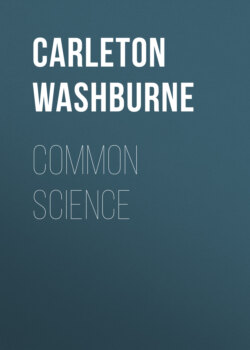Читать книгу Common Science - Carleton Washburne - Страница 30
На сайте Литреса книга снята с продажи.
Fig. 20. The water rises through the lamp wick by capillary attraction.
ОглавлениеTable of Contents
The space between the threads of the wick, and especially the still finer spaces between the fibers that make up the threads, act like fine tubes and the liquid rises in them just as it did in the fine glass tube. Wherever there are fine spaces between the particles of anything, as there are in a lump of sugar, a towel, a blotter, a wick, and hundreds of other things, these spaces act like fine tubes and the liquid goes into them. The force that causes the liquid to move along fine tubes or openings is called capillary attraction.
Capillary attraction—this tendency of liquids to go into fine tubes—is caused by the same force that makes things cling to each other (adhesion), and that makes things hold together (cohesion). The next two sections tell about these two forces; so you will understand the cause of capillary attraction more thoroughly after reading them. But you should know capillary attraction when you see it now, and know how to use it. The following questions will show whether or not you do:
Application 10. Suppose you have spilled some milk on a carpet, and that you have at hand wet tea leaves, dry corn meal, some torn bits of a glossy magazine cover, and a piece of new cloth the pores of which are stopped up with starch. Which would be the best to use in taking up the milk?
Application 11. A boy spattered some candle grease on his coat. His aunt told him to lay a blotter on the candle grease and to press a hot iron on the blotter, or to put the blotter under his coat and the iron on top of the candle grease—he was not quite sure which. While he was trying to recall his aunt's directions, his sister said that he could use soap and water to take the grease out; then his brother told him to scrape the spot with a knife. Which would have been the right thing for him to do?
